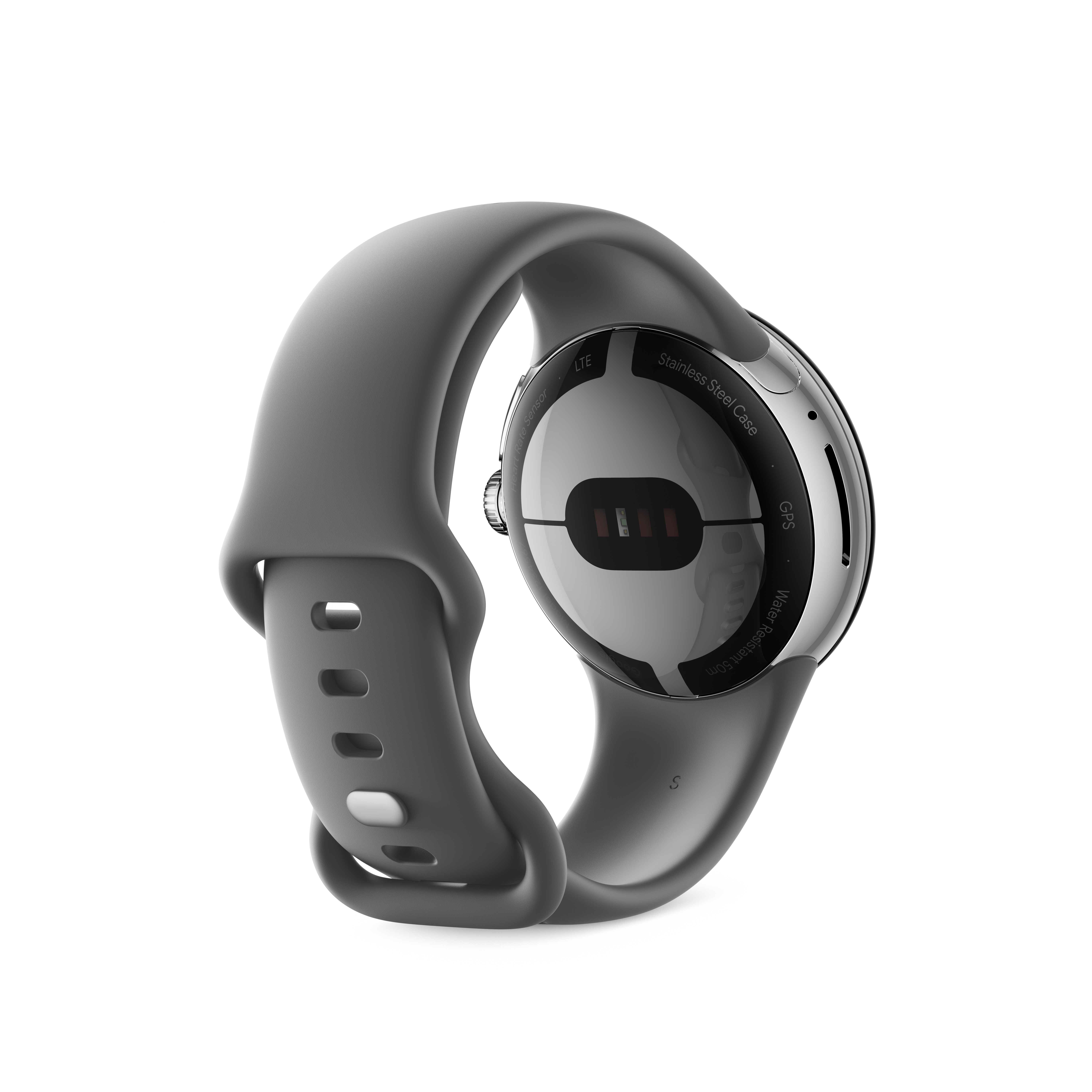Here’s something to wrap your brain around: Google has never made its own smartwatch. The company has played in and around the space at least since 2014, with announcement of Android Wear, but it’s never gone as far as making its own product. Given that the market has been as hot as it has for as long as it has, the news really boggles the mind.
All of that will change this fall, at the company’s annual hardware event. Alongside the recently teased Pixel 7, Google will finally — officially — debut the Pixel Watch. I say “finally” here, because 1. This thing has been leaking all over the place (including a very credible prototype lost at a bar in recent months) and 2. We are, at least, getting a decent peek at the product today.

Image Credits: Google
The latter is a tack that Google has also taken with the Pixel 7 and Pixel Tablet (which is even further from production) — it also offered an early look at the revamped Pixel 6 ahead of that product’s release. It bucks the standard industry trend of keeping things under as tight a lock as possible until the official release date, but it makes a lot of sense for a company hoping to dramatically swing its hardware fortunes.
The truth is that Google doesn’t have a great track record with consumer hardware. Last year’s Pixel 6 was an important step in that direction. This (well, fall) is the moment Google will finally cash in all its chips. That includes its $40 million January 2019 purchase of Fossil’s smartwatch technology and last year’s $2.1 billion Fitbit acquisition. Included in the wearable Katamari Damacy are Fossil’s Misfit purchase and Fitbit’s acquisition of both Pebble and Vector. Honestly, it’s stunning to take a moment to consider all of the time and money that went into getting us to this place.

Image Credits: Google
It’s not so much that the Pixel Watch is make or break for Google’s wearable fortunes, exactly, but there’s a lot riding on the product. It’s understandable that the company is doing its damnedest to keep the hype cycle going for the next several months — especially given the fact that its release timing will likely put the product right up against the Apple Watch Series 8 announcement.
The details are still fairly thin — as you’d expect for a product that’s not going to debut until the fall. We do, however, now know a handful of things about the upcoming smartwatch. For starters, the leaks appear to largely check out. From a design perspective, it’s more or less what we’ve been seeing in renders and lost devices. In contrast to Apple and Fitbit’s hardware designs, this thing is very round — something it may well have adopted from the Fossil acquisition. That appears to include a slight convex curve on the glass watch face.

Image Credits: Google
Like the Apple Watch, it features a physical crown, likely used to augment touchscreen navigation. The watch frame is made from recycled stainless steel, attaching to what appears to be custom bands. The device will — naturally — run the latest version of Wear OS, serving as the flagship product for the company’s beleaguered wearable operating system. It will be interesting to see what commonalities it shares with the Tizen hybrid Samsung’s been running on its latest Watch.
In its press material, the company writes, “The new Wear OS experience is designed to feel fluid and easy to navigate. It’s more glanceable than ever with refreshed UI and rich notifications, so you can stay present at home, at work, or on the go. And it delivers the apps you love, like your favorites from Google and others for download in Google Play, made for your wrist.”

Image Credits: Google
All we’ve seen as of this writing, however, are glimpses of what looks to be an extremely minimalist black and white interface. There’s a pop of color in the Assistant demo, which features the weather. The watch face, on the other hand, is straight-up black and white, featuring a number of elements pulled directly from Fitbit.
“It takes time to integrate a company with all the technology and people that Fitbit has,” Google hardware head, Rick Osterloh, says. “This is the first time you see it come to market. We’re really excited about the combination. I’ve personally been a Fitbit user for several years, so I’m thrilled to see this come together. I think it’s going to be a perfect combination.”
The company adds, “Get insights into your health with continuous heart rate and sleep tracking, see your Active Zone Minutes when you’re working out, and track your stats and progress against your personal fitness goals.”

Image Credits: Google
The Fitbit acquisition immediately catapults the product toward the head of the pack of health-focused consumer wearables. The company has made some great strides on that front in the hardware and software departments, including the recent announcement of an always-on A-Fib detection. It will be interesting to see if that makes it into the product at launch.
“[Fitbit CEO James Park] and his team are driving the development of this watch,” says Osterloh. “They bring a ton of expertise in this space and we bring a lot of exptertise with the smartwatch OS with Wear OS. That combination has been incredibly powerful. It helps add capability to Fitbit. It also allows Fitbit to build a very modern smartwatch.”
The executive added that Fitbit devices will continue to be developed under that brand, and that — as promised during the acquisition — health information will be siloed on the Fitbit side.

Image Credits: Google
Naturally, the device sports the standard Google suite of software, including things like Assistant, Maps and Wallet, which will be accessible without a smartphone, courtesy of an optional LTE connection. Naturally, the product will be designed to work better with the Pixel 7 set to be officially unveiled alongside it (including the use of features like Find My Device and smart home control). Interestingly — but perhaps not surprisingly — it won’t work with iOS devices.
I expect/hope Google’s still got some surprises up its sleeve here. It’s got a nice-looking piece of hardware and a wealth of resources from the Fitbit and Google software teams. But all of that and more are going to have to come together in an extremely compelling way to make a splash in the already mature smartwatch market. As for cost, Osterloh says the Pixel Watch will have “premium pricing,” which leads one to believe it will be more expensive than Fitbit’s $200 Versa. Hopefully it will fall somewhere between that and the latest $350 Galaxy Watch.












